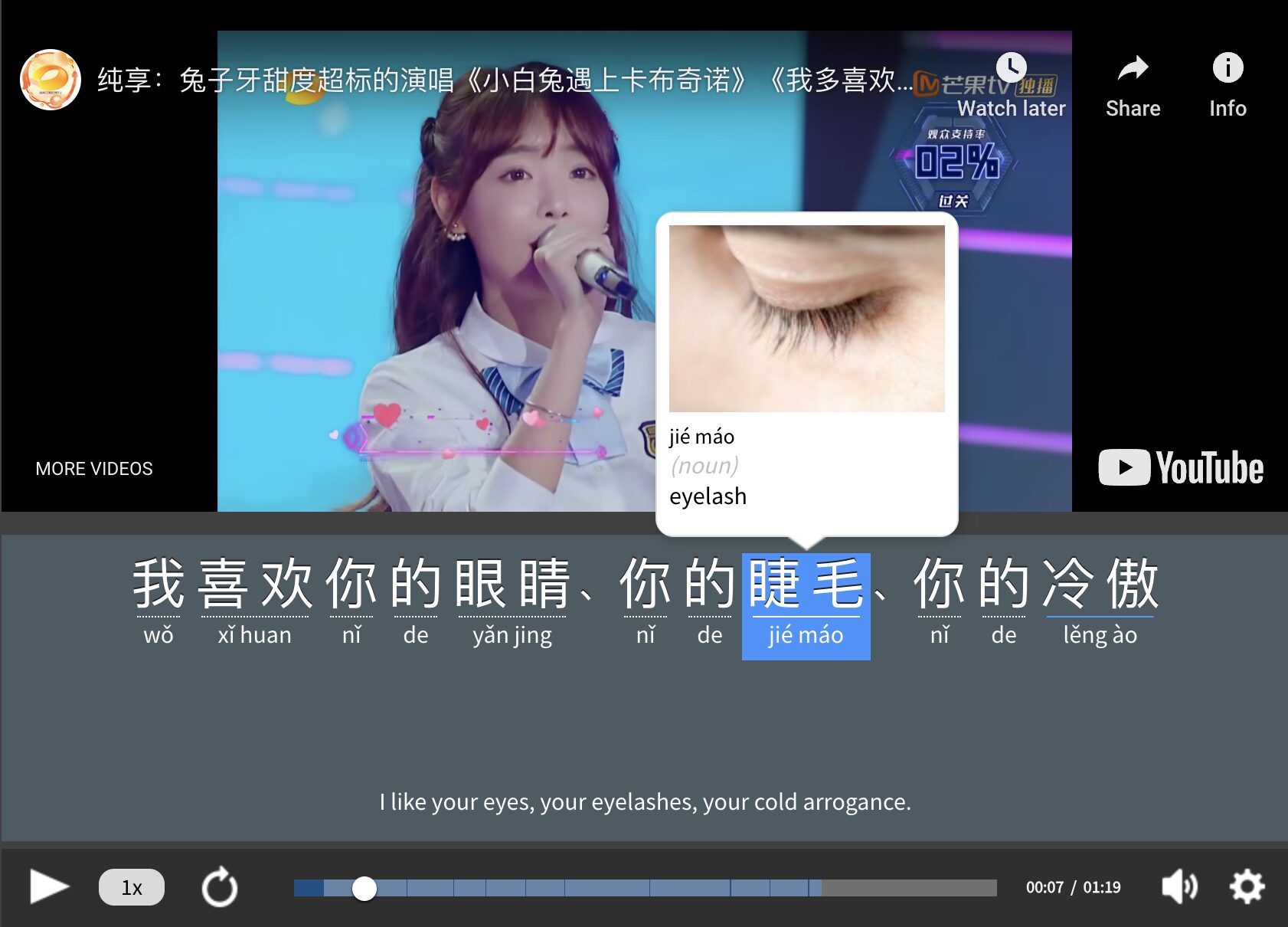How to Master Chinese Tones: A Comprehensive Guide

Chinese is a tonal language, which means that the tone or pitch you use when you say a word determines its meaning. I promise it’s simpler than you’d expect. We actually use tones in English all the time to indicate questions and emotions.
In this post, we’ll learn all the Mandarin Chinese tones, pitch, tone pairs and more.
Download: This blog post is available as a convenient and portable PDF that you can take anywhere. Click here to get a copy. (Download)
What Are Chinese Tones?
Every language has its own unique sound system. Linguists call the study of these systems phonology.
Mandarin Chinese has its own sound system too, and tones are an essential part of it.
In Chinese, the tone of a word is what gives it meaning. When you change the tone—or accidentally use the wrong one—you change the meaning of the word. Take, for example, these words:
妈 (mā) — mom
麻 (má) — hemp or flax
马 (mǎ) — horse
骂 (mà) — to scold or verbally abuse
吗 (ma) — a question particle
While each of these words looks as if they sound the same, they have different tones—which give them different meanings.
1. First tone (flat tone)
The first tone is made when your voice becomes higher and flatter. The pitch is raised and the syllable is pronounced with a drawn-out tone that doesn’t drop or rise.
In pinyin, the first tone is written as a long line above the vowel or as the number 1 (for example, instead of mā you might occasionally see ma1). The numerical version isn’t near as common as the actual tone mark, so you likely won’t see it as often.
| Chinese | Pinyin | English |
|---|---|---|
| 喝 | hē | To drink |
| 天 | tiān | Sky |
| 黑 | hēi | Black |
| 一 | yī | One |
| 发 | fā | To send |
| 心 | xīn | Heart |
| 瓜 | guā | Melon |
| 猫 | māo | Cat |
| 三 | sān | Three |
| 出 | chū | To go out |
2. Second tone (rising tone)
The second tone is made with a rising voice. The pitch starts out low and then becomes higher. In pinyin, it’s written as a rising dash above the vowel or the number 2 (i.e. mang2):
| Chinese | Pinyin | English |
|---|---|---|
| 忙 | máng | Busy |
| 球 | qiú | Ball |
| 龙 | lóng | Dragon |
| 喉 | hóu | Throat |
| 来 | lái | To come |
| 明 | míng | Bright |
| 难 | nán | Difficult, hard |
| 鱼 | yú | Fish |
| 时 | shí | Time |
| 房 | fáng | House |
3. Third tone (dip tone)
The third tone is one of the hardest for Mandarin learners. The pitch falls lower before rising higher again.
In pinyin, the third tone is written as a dip above the vowel or the number 3 (i.e. wo3):
| Chinese | Pinyin | English |
|---|---|---|
| 我 | wǒ | I/me |
| 好 | hǎo | Good |
| 你 | nǐ | You |
| 很 | hěn | Very |
| 点 | diǎn | Point |
| 姐 | jiě | Elder sister |
| 也 | yě | Also |
| 狗 | gǒu | Dog |
| 小 | xiǎo | Small |
| 可 | kě | Can |
4. Fourth tone (falling tone)
To pronounce the fourth tone correctly, say the word with force, making your pitch fall. In pinyin, the fourth tone is written as a falling slant or dash above the vowel, or the number 4 (i.e. shi4):
| Chinese | Pinyin | English |
|---|---|---|
| 是 | shì | To be |
| 后 | hòu | Behind |
| 不 | bù | No, not |
| 热 | rè | Hot |
| 日 | rì | Day |
| 四 | sì | Four |
| 爸 | bà | Dad, father |
| 那 | nà | That |
| 下 | xià | Down |
| 去 | qù | To go |
5. Fifth tone (neutral tone)
Whether the fifth tone is actually considered a tone is up for debate. Instead of making your voice go up or down, this tone is simply neutral—which means the word has no tone.
Pinyin doesn’t mark the fifth tone because there’s nothing you have to change or emphasize, although you’ll sometimes see it represented by the number 5 (i.e. ma5).
For example, the previously mentioned question particle 吗 turns statements into yes/no questions and is pronounced with a neutral (or no) tone.
Other neutral tone words include:
| Chinese | Pinyin | English |
|---|---|---|
| 吧 | ba | Suggestion particle (turns a statement into a suggestion) |
| 么 | me | Interrogative suffix [eg. 什么 (shén me) — what] |
| 儿 | er | R sound |
| 的 | de | Possessive particle |
| 呢 | ne | Particle for asking questions back to the original asker |
Now you know all five tones. I recommend bookmarking this guide on how to practice Chinese tones so you can move on to it after finishing this one:
How to Practice Chinese Tones: 11 Tips to Master Pronunciation | FluentU Chinese Blog
Don’t know how to practice Chinese tones? Look no further. Click here to find 11 highly effective methods for practicing Chinese tones, like learning practicing tone…
And the most obvious way to get better at tones is to practice them—listen to them and say them.
Since you’re not going to be able to pick up on every (or maybe even most) tones in normal Chinese media like podcasts right away, I highly recommend using a program that incorporates authentic, native-speaker videos with a transcript or subtitles you can follow along with. This will let your eyes, ears and brain work together to help you master them. One program I can recommend for this is FluentU.
FluentU takes authentic videos—like music videos, movie trailers, news and inspiring talks—and turns them into personalized language learning lessons.
You can try FluentU for free for 2 weeks. Check out the website or download the iOS app or Android app.
P.S. Click here to take advantage of our current sale! (Expires at the end of this month.)
What Is Chinese Pitch Contour?
Knowing the five levels of contour is meant to help you determine which pitch to use when pronouncing each tone. But if it doesn’t help (or makes you more confused), you’re welcome to ignore it.
There are five pitch contour levels:
5 = High
4 = Mid-high
3 = Middle
2 = Mid-low
1 = Low
Let’s take a look at the pitch levels of each tone:
First Tone = Level 5 to Level 5 (or, “high pitch” to “high pitch”)
Second Tone = Level 3 to Level 5 (or, “middle pitch” to “high pitch”)
Third Tone = Level 2 to Level 1 to Level 4 (or, “mid-low pitch” to “low pitch” to “mid-high pitch”)
Fourth Tone = Level 5 to Level 1 (or, “high pitch” to “low pitch”)
Fifth Tone = no pitch
Chinese Tone Changes
You should be aware that Chinese tones can change when used in specific sequences.
In other words, certain tones become different tones when paired with others.
Third tone changes
Third tone + third tone = second tone + third tone.
If one word with a third tone is followed by another word with a third tone, the first one becomes a second tone.
For example:
我很忙 (wǒ hěn máng) — “I am busy” becomes 我很忙 (wó hěn máng)
你好吗 (nǐ hǎo ma) — “How are you” becomes 你好吗 (ní hǎo ma)
Note that in pinyin, the tone change is not written. You simply must remember that you need to change the first word to a second tone.
The third tone can become neutral.
When followed by another tone, the third tone can become neutral or dropped.
This is optional, but many Chinese speakers do it, as it requires less effort and makes speech faster.
Even if you don’t use it, it’s important to be prepared for when a Chinese speaker does. For example:
考试 (kǎo shì) — “test” can become 考试 (kao shì)
喜欢 (xǐ huān) — “to like” can become 喜欢 (xi huān)
Again, this tone change is not marked by pinyin.
一 (yī) tone changes
一 (yī) + fourth tone = 一 (yí) + fourth tone.
When the word 一 (yī) — “one” is followed by a fourth tone, it changes to a second tone.
You’ve probably seen this happen without even realizing it. Unlike most other tone changes, many textbooks and online courses mark this tone change for you.
For example:
一下 (yī xià) — “a bit” becomes 一下 (yí xià)
一定 (yī dìng) — “definitely” becomes 一定 (yí dìng)
一 (yī) + any tone = 一 (yì) + any tone.
Any time 一 (yī) is paired with another tone, it changes to a fourth tone: 一 (yì).
For example:
一般 (yī bān) — “usually” becomes 一般 (yì bān)
一起 (yī qǐ) — “together” becomes 一起 (yì qǐ)
一 (yī) can become a neutral tone.
Similar to the third tone, 一 (yī) can drop its tone when placed in between two words.
Dropping the tone is optional, but if you don’t, the same rules apply.
For example:
休息一下 (xiūxi yī xià) — “to rest a bit” becomes either:
休息一下 (xiūxi yí xià) with a second tone, or
休息一下 (xiūxi yi xià) with a neutral tone.
快一点 (kuài yī diǎn) becomes either:
快一点 (kuài yì diǎn), or
快一点 (kuài yi diǎn)
The number 一 (yī) stays the same.
When counting, the number 一 (yī) does not change its tone.
However, the number 一百二十六 (yī bǎi èr shí liù) — “126” becomes 一百二十六 (yì bǎi èr shí liù).
This is also true when counting items, such as 一个苹果 (yī gè píng guǒ) — “one apple,” which changes to 一个苹果 (yí gè píng guǒ).
不 (bù) tone changes
不 (bù) + fourth tone = 不 (bú) + fourth tone.
When the word 不 (bù) — “no/not” is followed by another fourth tone, it changes to a second tone. For example:
不是 (bù shì) — “to not be” becomes 不是 (bú shì)
他不爱你 (tā bù ài nǐ) — “he doesn’t love you” becomes 他不爱你 (tā bú ài nǐ)
It can be neutral when in between two words.
When placed between two words to make a phrase, 不 (bù) can become a neutral tone. Although this is optional, it’s important to be prepared for when native speakers do it.
For example:
吃不完 (chī bù wán) — “can’t finish eating” can become 吃不完 (chī bu wán)
差不多 (chà bù duō) — “more or less” can become 差不多 (chà bu duō)
去不去 (qù bù qù) — “will you go?” can become 去不去 (qù bu qù)
Chinese Tone Pairs
You’ll rarely find full-length sentences in Chinese that only use one tone.
In fact, many Chinese words consist of two tones. When this happens, you’ve come across a tone pair.
First tone pairs
| Tone Pair | Example | Pinyin | English |
|---|---|---|---|
| First Tone + First Tone | 今天 | jīn tiān | Today |
| First Tone + Second Tone | 经常 | jīng cháng | Often |
| First Tone + Third Tone | 多少 | duō shǎo | How many |
| First Tone + Fourth Tone | 帮助 | bāng zhù | To help |
Second tone pairs
| Tone Pair | Example | Pinyin | English |
|---|---|---|---|
| Second Tone + First Tone | 明天 | míng tiān | Tomorrow |
| Second Tone + Second Tone | 同学 | tóng xué | Classmate |
| Second Tone + Third Tone | 还有 | hái yǒu | And |
| Second Tone + Fourth Tone | 前面 | qián miàn | In front |
Third tone pairs
| Tone Pair | Example | Pinyin | English |
|---|---|---|---|
| Third Tone + First Tone | 喜欢 | xǐ huān | To like |
| Third Tone + Second Tone | 警察 | jǐng chá | Police |
| Third Tone + Third Tone | 哪里 | nǎ lǐ | Where |
| Third Tone + Fourth Tone | 礼貌 | lǐ mào | Polite |
Fourth tone pairs
| Tone Pair | Example | Pinyin | English |
|---|---|---|---|
| Fourth Tone + First Tone | 信息 | xìn xī | News |
| Fourth Tone + Second Tone | 地图 | dì tú | Map |
| Fourth Tone + Third Tone | 入口 | rù kǒu | Entrance |
| Fourth Tone + Fourth Tone | 现在 | xiàn zài | Now |
And that’s all there is to Chinese tones!
You’re officially ready to dive in and start sounding like a native Mandarin speaker.
Download: This blog post is available as a convenient and portable PDF that you can take anywhere. Click here to get a copy. (Download)
And one more thing...
If you like learning Chinese at your own pace and from the comfort of your device, I have to tell you about FluentU.
FluentU makes it easier (and more fun) to learn Chinese by making real content like movies and series accessible to learners. You can check out FluentU's curated video library, or bring our learning tools directly to Netflix or YouTube with the FluentU Chrome extension.
One of the features I find most helpful is the interactive captions—you can tap on any word to see its meaning, an image, pronunciation, and other examples from different contexts. It’s a great way to pick up vocab without having to pause and look things up separately.
FluentU also helps reinforce what you’ve learned with personalized quizzes. You can swipe through extra examples and complete engaging exercises that adapt to your progress. You'll get extra practice with the words you find more challenging and even be reminded you when it’s time to review!
You can use FluentU on your computer, tablet, or phone with our app for Apple or Android devices. Click here to take advantage of our current sale! (Expires at the end of this month.)











